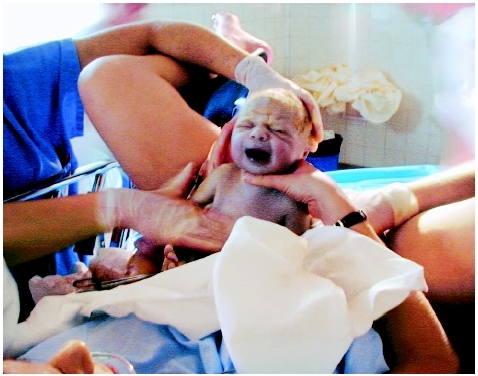Up to this point, the woman may feels as if her participation is small, because all she has done is breathe. Active involvement can now begin along with some emotional relief that it is almost over. Without anesthesia, there is often an overwhelming urge to push, and the mother gets a second wind. The baby's head is through the cervix and on its way down the birth canal. The uterine contractions get stronger, and the infant passes along the vagina helped by contractions of the uterus and the mother's pushing. If an epidural anesthetic is being used, many practitioners recommend decreasing the dosage so the mother has better control of her pushing. Research has shown, however, that the contractions will continue to push the baby down the birth canal without mother's help. If a woman is numb from an epidural, she cannot push effectively, and it is usually better to let the contractions work alone. This is called "laboring down."
When the top of the baby's head appears at the opening of the vagina, the birth is nearing completion. First
